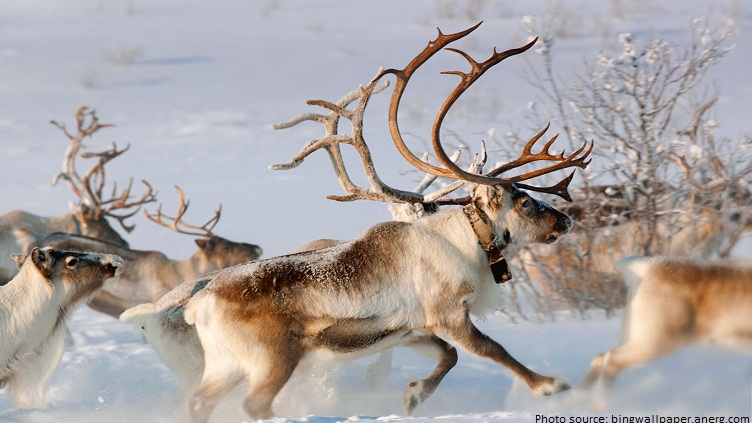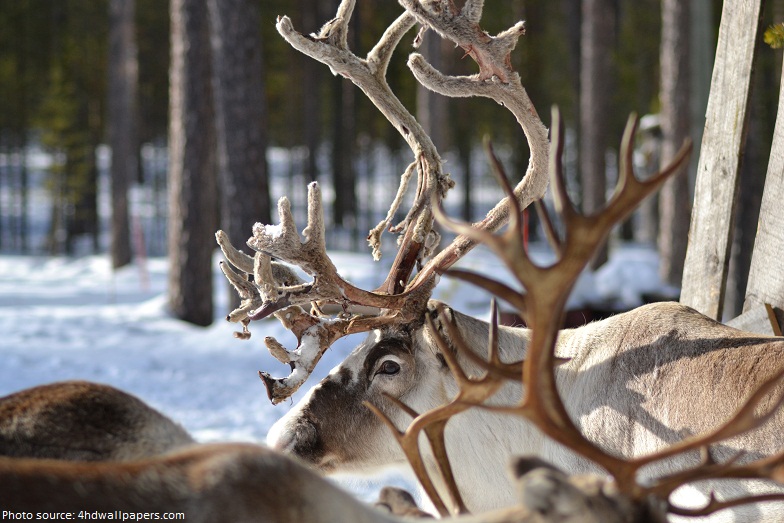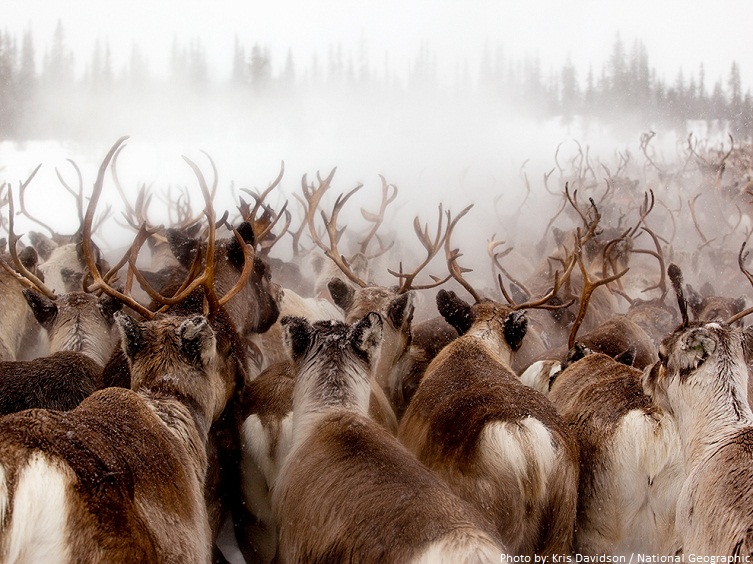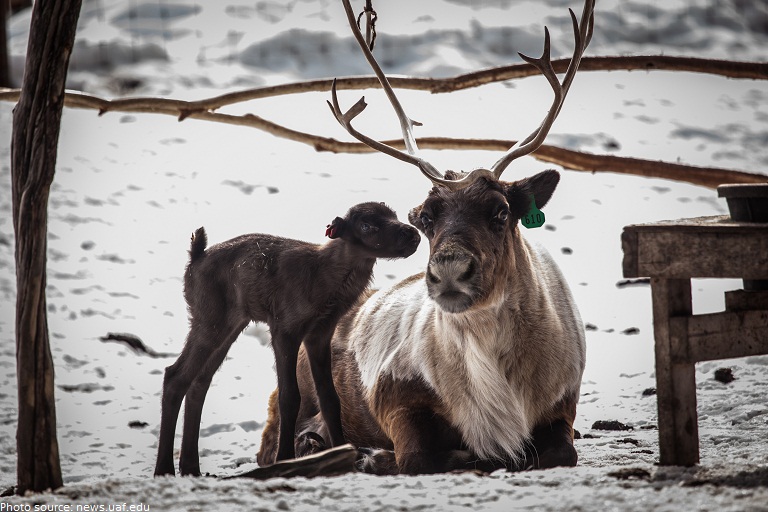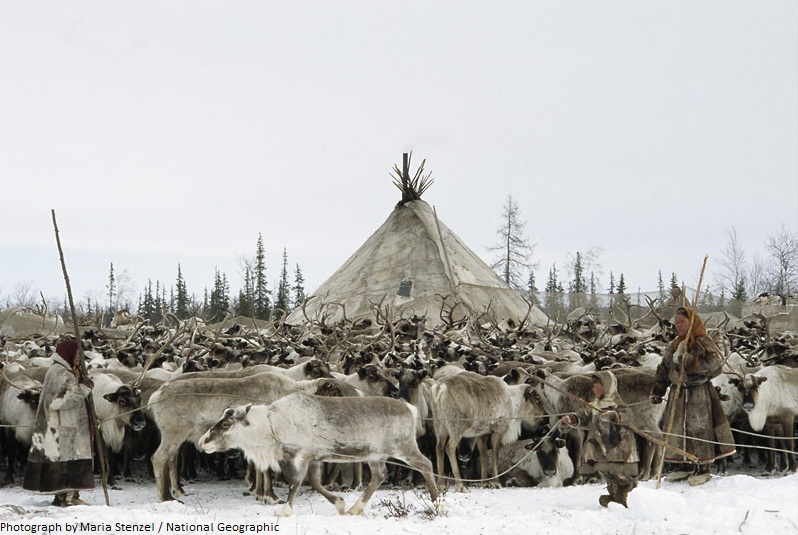Reindeer are also known as Caribou. In Europe they are called Reindeer all the time. In America they are called Caribou in the wild and when domesticated is call Reindeer.
The reindeer is found in large herds in the very north of the world.
In fact, reindeer can be found in Northern Asia, Europe, Siberia, Alaska, Canada and Greenland.
Reindeer are built for staying warm in freezing temperatures.
Reindeer are able to adapt to their climate and surroundings very easily by maintaining their energy efficiently. Their bodies react to changes in temperatures by making adjustments. When temperatures become frigid, they have the uncanny ability to lower the temperature in their legs to near freezing levels. This keeps their core body heat even.
Female reindeer can live up to 17 years and male reindeer for 4 years less.
The average reindeer length – females body length is between 1.6 and 2 meters (5.2 and 6.5 feet). Males body length is between 1.8 and 2.1 meters (5.9 and 6.8 feet).
They are from 85 ot 150 centimeters (33 to 60 inches) tall at shoulder.
The average reindeer weight – females weight from 80 to 120 kilograms (176 to 264 pounds). Males weight from 160 to 180 kilogram (352 to 396 pounds), depending on time of year.
In all reindeer subspecies males are 10% to 50% heavier than females.
Reindeer come in a variety of colors, depending on the subspecies, the region, the sex, and even the season.
A male’s antlers can measure up to 130 centimeters (51 inches) long, and a female’s antlers can reach 50 centimeters (20 inches).
They are the only type of deer in which both male and female reindeer have antlers.
Reindeer are the only mammals that grow new sets of antlers annually.
They dig for food using their large hooves.
At their top speed, reindeer can run up to 80 kilometers per hour (50 miles per hour).
Reindeer trek north in the summer in one of the largest animal migrations on Earth. They travel more than 965 kilometers (600 miles) along well-traveled routes.
Reindeer spend the summer feeding on grasses, mushrooms, and plants in the tundra. They begin to move south in the winter and over one year they will have migrated over 2,574 kilometers (1,600 miles).
Reindeer have a strong sense of smell, and it’s that sense of smell that assist them in finding the lichen under the snow. They can sniff out the plant material easily, even through snow that is 60 centimeters (23 inches) deep.
Depending on where they live, reindeer have to watch out for golden eagles, brown bears, gray wolves, Arctic foxes, mountain lions, lynx, coyotes, and dholes.
A healthy adult reindeer is usually safe from predators, especially in a large herd, where many individuals can watch for danger.
The gestation length is 7.5 months. The baby reindeer are called calves, which are born beginning in April.
Mother reindeer usually give birth to a single calf, although there may be twins, and three and four have been recorded. The calf is not spotted like other deer species. Newborns are able to stand just one hour after birth, can follow their mother at five to seven hours old, and can outrun a human when one day old!
A reindeer calf drinks its mother’s rich milk, and at one week old, it begins to add solid food to its diet. By two weeks, it has doubled its birth weight.
Reindeer are thought to have first been domesticated by Arctic peoples at least 3,000 years ago (and perhaps as long as 7,000 years ago) in northern Eurasia (Lapland) and still remain the only deer species to be widely domesticated .
For Sami people (the indigenous people of northern Finland), reindeer are important animals both in their culture and for sustenance. They have approximately four hundred words for the food, tools and other products and parts taken from reindeer.
In Europe’s Reindeer Age sixteen thousand years ago, reindeer were abundant. Primitive humans relied heavily on them or their skins to keep them warm, meat to sustain them, and bones to create tools.
Santa Claus‘s reindeer form an imaginary team of flying reindeer traditionally held to pull the sleigh of Santa Claus and help him deliver Christmas gifts.
The Canadian 25-cent coin features a depiction of a reindeer on one face.
